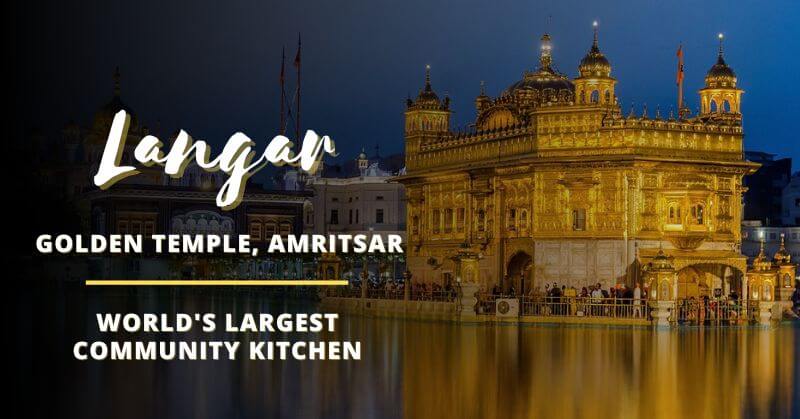The Golden Temple is situated in Amritsar, the sacred city of the Sikhs. The Golden Temple is one of the most famous Sikh pilgrimage sites. It is known for its magnificent golden dome. It is, moreover, a sign of equality and human brotherhood. No one here ever faces any obstacles in their quest for spiritual comfort. There is no discrimination regardless of caste, creed, or race. Free meals, commonly known as langar, are provided at the Golden Temple in Amritsar.
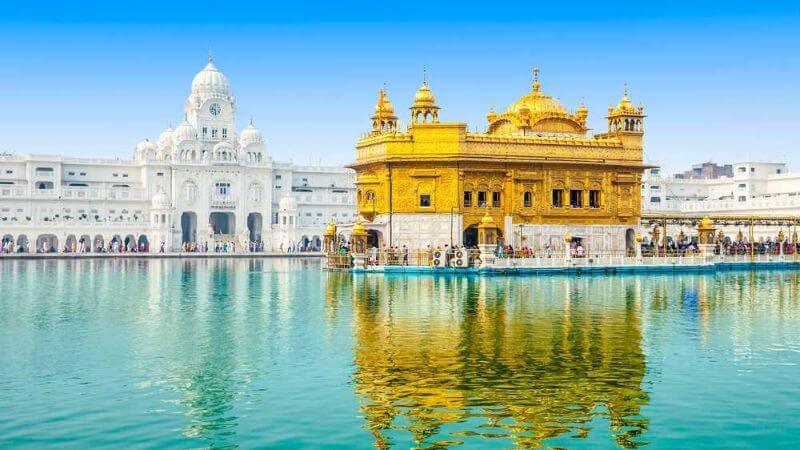
The tradition was established by Guru Nanak, the first guru of the Sikh people. Every day, visitors come to the doors of the Golden Temple to have a meal. The best part is that food is distributed constantly. It is operated exclusively by dedicated volunteers. No one asks you who you are or where you are from in the Golden Temple. People are serviced till they are satisfied and with love and respect. Here are a few interesting facts about the langar in Golden Temple, World’s largest community kitchen.
World’s Largest Community Kitchen
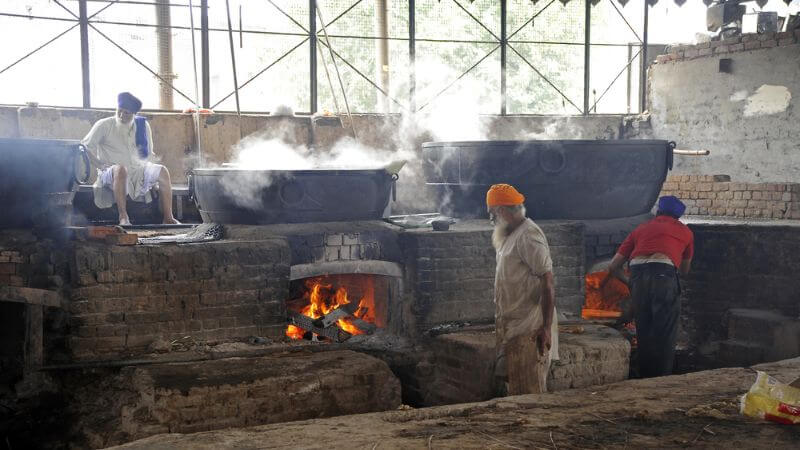
Nearly 100,000 people visit the Amritsar Golden Temple each day. People come here in pursuit of peace and devotion. It is home to one of the biggest community kitchens in the world. It provides daily meals to close to 75,000 people. In the entire world, this is the biggest community kitchen. It is available 24 hours a day for the whole year. As a result, the system’s overall operation has a significant and stunning aspect. Gurdwara’s donations enable it to purchase raw materials in large quantities. The equipment used to prepare meals would surprise anyone.
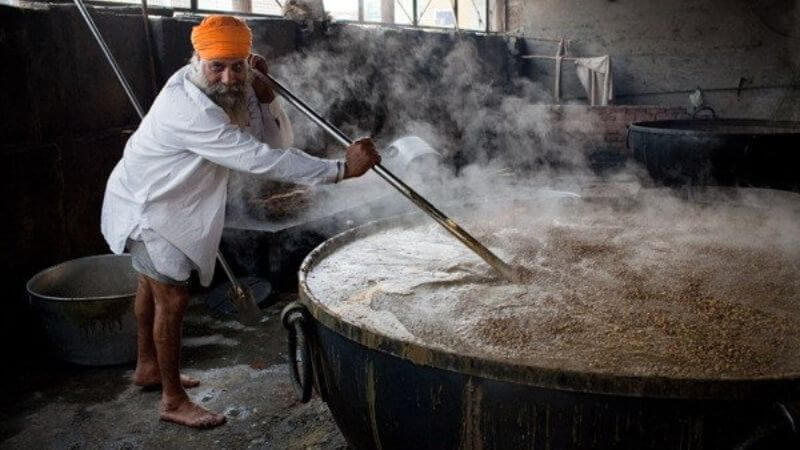
Several quintals’ worth of material can fit into the utensils. Numerous gas cylinders are utilized throughout the day. The process of producing rotis takes several rooms. In the other rooms, volunteers manually roll out rotis. More than 450 volunteers work continuously to keep the kitchen operational. The volunteers prepare each meal by hand on normal days. They only use the roti maker on extraordinary occasions. The temple typically consumes 1500 kg of rice and 13,000 kg of lentils. Additionally, 12,000 kg of flour and 2000 kg of veggies are also used.
The Langar Hall Of Golden Temple
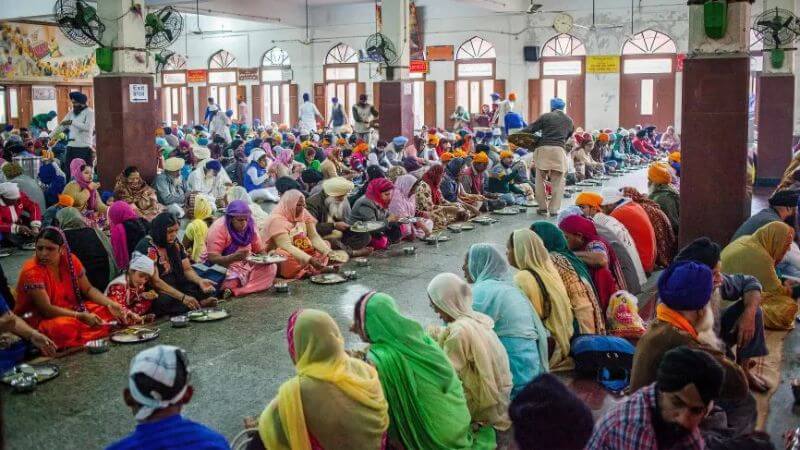
The Guru Ramdas Langar Hall of the Golden Temple is 50,000 square feet in size. It is split into two sections, each of which can accommodate 5000 people at a time. Everyone is expected to sit on the floor and eat the langar. They’re seated in one of the two community halls. The food is prepared in two kitchens at the Golden Temple.
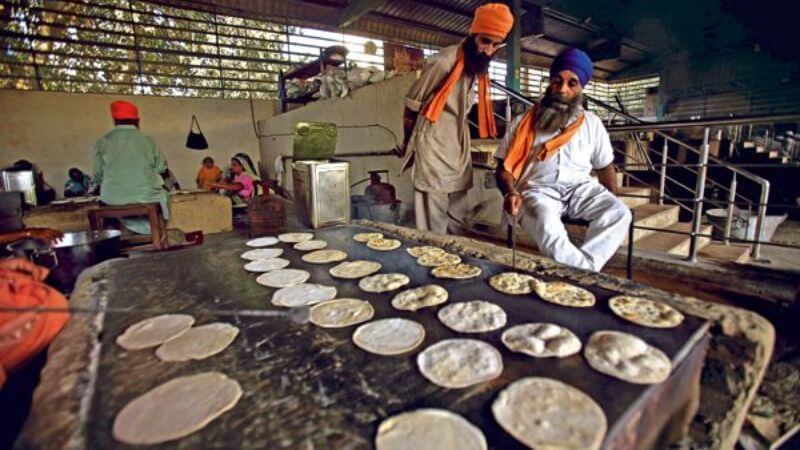
Large tawas, dough-kneading equipment, and burners are also present. Other equipment includes a conveyor belt and a mechanized oven. It can make 11,000 rotis. Over 300 sewadars work there. Also, there are hundreds of other volunteers. They handle all aspects of food preparation and serving. They even help in washing the utensil. The place is as beautiful as its name, and the volunteers’ hearts are as pure as gold.
The Food And Prasad At Golden Temple
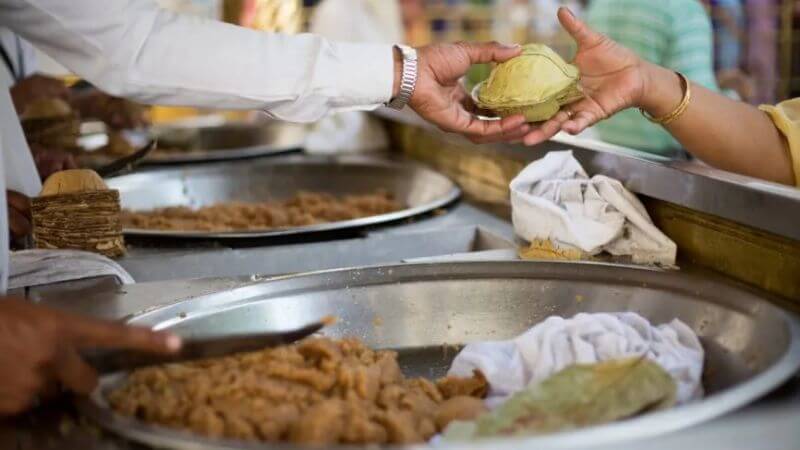
Rice, dal, roti, sabzi, channa, and kheer are all included in the langar. Proteins, carbs, and other nutrients are present in this meal. It takes three hours to prepare this vegetarian meal. You can also enjoy delicious, crispy jalebis during Baisakhi. The cuisine is changed almost daily. The Langar dal, often known as the yellow dal, is not just regular dal. It is prepared in a room with three enormous cauldrons that are solely for this purpose. Nearly 400 kg of dal is washed and cooked in a wood-fired oven in each vessel.
The prasad at any place of worship enhances the experience of going there. The Kada Prasad is one of the best-tasting prasad in the world. It is also offered in Amritsar’s Golden Temple and many other gurudwaras. The aroma of this prasad can be smelled throughout the temple. It is made with pure desi ghee, sugar, whole wheat flour, and water. The devotees believe that the Kada Prasad offered here revitalizes your body. They also believe that it can cure a wide range of ailments. It is powerful and genuinely magical. This is unquestionably a great reason to eat at the langar at the Golden Temple.
The Hygiene Maintained At The Golden Temple
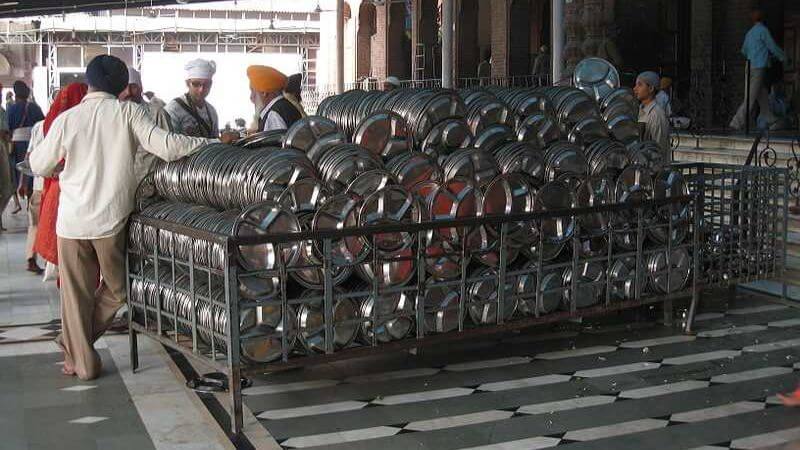
The plates and vessels are cleaned to the highest standards of hygiene. The utensils are cleaned by being washed several times. Maintaining good hygiene is essential before and after meals. Extra volunteers collect the dirty plates. Each plate is washed five times before use. Here, more stringent hygiene and food safety regulations have been implemented. Food handlers are rigorously watched as they receive sanitary instruction and adopt it. All Langar locations are cleaned daily to maintain the highest levels of hygiene.
Nobody eats at the langar hall while the food is being served. Instead, they wait for every plate to be filled in the hall. A volunteer then calls out, “Jo bole so Nihal,” to which people reply, “Sat Sri Akal!” Then everyone begins to eat. Anyone is welcome to enjoy the delicious meal that is served with respect and affection until they are satisfied.
Follow Us: Facebook | Instagram | Twitter |
Entertales is on YouTube; click here to subscribe for the latest videos and updates.


